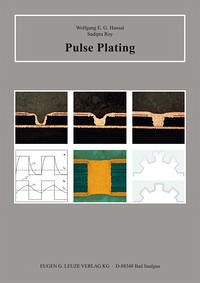The electrodeposition of metals using pulsed current has achieved practical importance in recent years. Although it has long been known that changes in potential, with or without polarity reversal, can significantly affect the deposition process, the practical application of this has been slow to be adopted. This can largely be explained in terms of the complex relationship between the current regime and its effect on the electrodeposition process. In order to harness these effects, an understanding of the anodic and cathodic electrochemical processes is necessary, together with the effects of polarity reversal and the rate of such reversals. In this new monograph, the basics of metal electrodeposition from solution are laid out in great detail in seven distinct chapters. With this knowledge, the reader is able to predict how a given pulse train profile can be adopted to achieve a desired outcome. Equally important is the choice of a suitable rectifier and the ancillary control circuits to enable pulse plating. Using simulation processes, the effect of a given pulse regime can be modelled, with the time- and cost-savings that this brings. A separate chapter is devoted to this. One of the most important applications of pulse plating today is the electrodeposition of copper onto printed circuit boards and electronic circuits, here described in detail. Additional chapters discuss the electrodeposition of nickel, tin, chromium, zinc as well as various noble metals. Electropolishing and surface patterning are two further processes for which pulsed current can be advantageously used. The concluding chapters are devoted to nanostructuring of multilayers and the electrodeposition of composites. This monograph covers virtually every aspect of the subject, not least by drawing on some 800 reference sources.
Bitte wählen Sie Ihr Anliegen aus.
Rechnungen
Retourenschein anfordern
Bestellstatus
Storno

